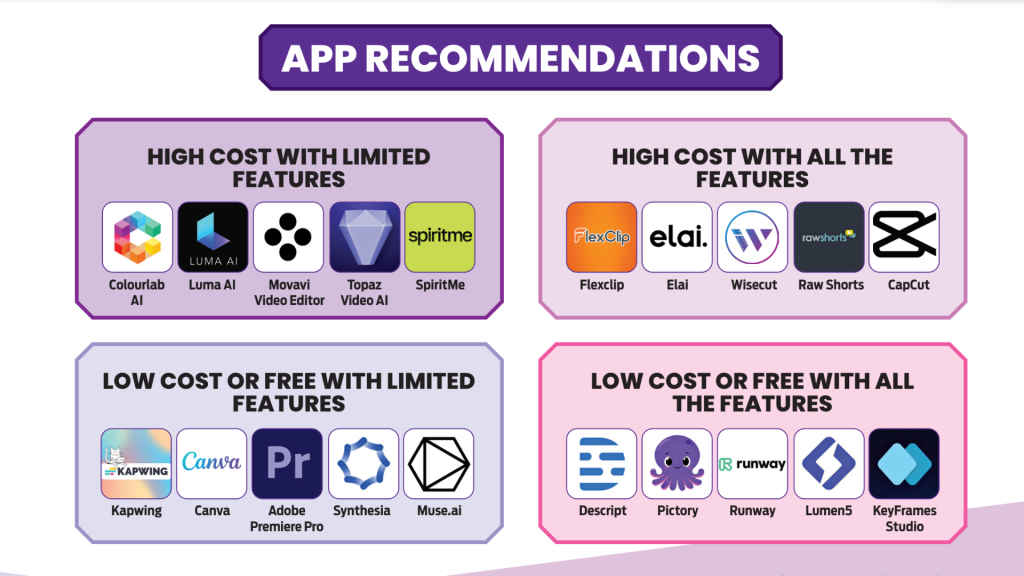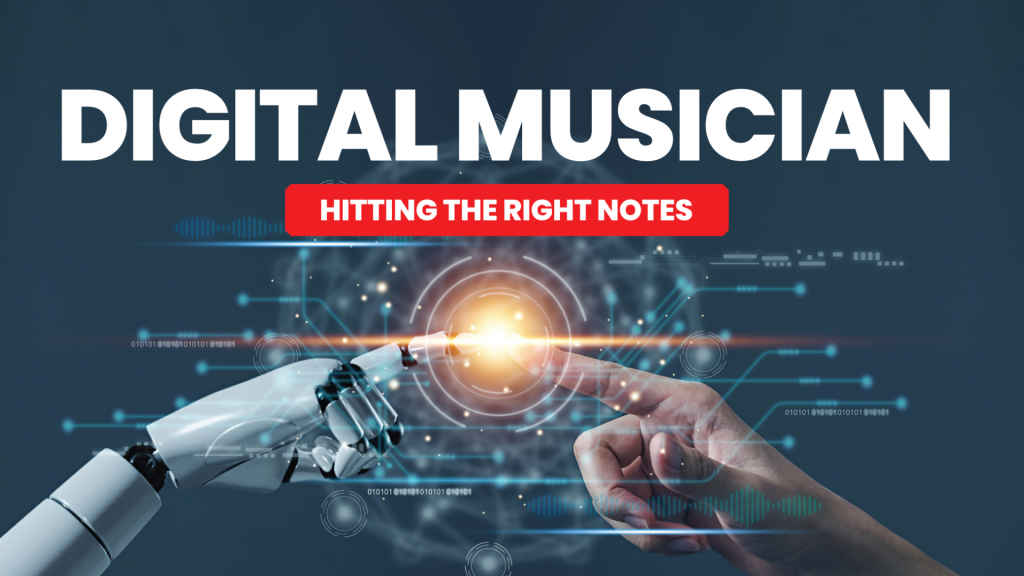Digit AI Guide: Find the best AI apps for graphic designers, video editors, and digital musicians

If you are someone who hasn’t gotten on to the AI bandwagon yet, you are in the right place. As we celebrate Digit’s 23rd Anniversary, we decided to curate a comprehensive list of apps that would assist you in getting the most out of AI no matter what you do. If you are a graphic designer, video editor, or a digital musician, then you will definitely find a use for an AI app in your day, and we will ensure that you are equipped with the right app across budgets.
In this article, which is part of a multi-article series about the use of AI across different domains, we will cover the use of AI for graphic designers, video editors, and digital musicians while also recommending AI-powered applications for you to consider if you are working in these domains.
Best AI tools for Graphic Designers

AI design tools revolutionise the creative process, offering time-saving automation and complex task simplification. AI in design not only augments efficiency but also enriches creativity, personalisation, and accessibility, heralding a new era of intelligent design solutions.
Automated Design Tools like Canva and Adobe Spark generate logos and social media posts from briefs, freeing designers for intricate projects. Image Recognition software, such as Google Cloud Vision, categorises extensive image libraries, streamlining the search for the perfect picture. Style Transfer applications like DeepArt transform images by overlaying different artistic styles.
Content-Aware Fill in Adobe Photoshop cleverly fills image gaps, maintaining consistency when parts are removed. Colourization tools, including DeOldify, infuse black and white images with colour, interpreting content for accurate hues. Font Recognition programs like WhatTheFont identify fonts from images, aiding in design consistency.
Layout Optimization technologies suggest layouts that align with content and design principles, while Trend Prediction tools analyse and forecast design trends, ensuring current, relevant creations. Personalised Designs emerge from AI analysing user data, offering tailored experiences through platforms like Optimizely. Lastly, Accessibility Improvement software recommends enhancements, like Stark, making designs more inclusive for visual impairments.
Remember, while AI can greatly enhance the capabilities of a graphic designer, it’s also important to use these tools responsibly and ethically. AI is a tool to aid creativity, not replace it. The designer’s vision and creativity are still at the heart of every great design.

Best AI tools for Video Editors

AI in video production streamlines editing, enhances quality, and personalises content. Automated Video Editing tools like Magisto and Adobe Premiere Pro’s Adobe Sensei AI analyse footage to create engaging videos, handling tasks from scene selection to audio syncing. Colour Correction software, such as DaVinci Resolve, ensures visual harmony by adjusting frame colours, while plugins like Cinema Grade balanced hues.
Object Tracking features in After Effects and Mocha Pro track movements for effect or text alignment. Noise Reduction tools like Audacity and iZotope RX clean audio tracks, removing unwanted background noise. Speech to Text Transcription services, including Descript and Simon Says, convert spoken words to text for subtitles or captions.
AI-driven Content Recommendation systems on platforms like YouTube suggest videos based on user interests. Video Enhancement tools, such as Topaz Video Enhance AI, upscale resolution and stabilise footage. Automated Thumbnail Generation features in TubeBuddy and Canva create compelling video thumbnails.
Facial Recognition technology in Facebook and iMovie identifies and tags individuals, adding personalised effects. Scene Detection in Final Cut Pro and Adobe Premiere Pro detects scene changes, aiding in transition placement and clip separation. Collectively, these AI capabilities revolutionise video editing, offering efficiency, consistency, and customisation.
Remember, while AI can greatly assist in video editing, it’s also important to use these tools responsibly to respect privacy and copyright laws. AI is a powerful tool, but it’s the creativity and vision of the video editor that truly brings a video to life. Happy editing! 😊

Best AI tools for Digital Musicians

Artificial Intelligence (AI) is revolutionising the music industry by offering tools for various aspects of music creation and production. AI-driven platforms like Amper Music, AIVA, and MuseNet can analyse musical patterns to generate new compositions, allowing users to input desired styles and moods for personalised pieces. Lyric generation tools such as LyricStudio and GPT-3 create lyrics based on themes, which artists can refine.
Sound mixing and mastering are enhanced by AI solutions like iZotope’s Neutron and LANDR, which learn from professional mixes to automate audio adjustments. iZotope’s RX specialises in restoring audio quality by eliminating imperfections. Vocal tuning is simplified with tools like Melodyne and Auto-Tune, providing pitch and timing corrections. For music discovery, Spotify and Apple Music offer AI-curated playlists reflecting users’ tastes. Analytical tools like Mixed In Key and Ableton Live dissect music for key, tempo, and structure. Collaboration platforms like Kompoz and Soundtrap connect musicians, while Spotify for Artists and Apple Music for Artists aid in strategising music promotion. AI is thus a versatile ally in the music industry, streamlining creative processes and enhancing production quality.
Each of these use cases has the potential to greatly improve a music producer’s efficiency and elevate their work output. By automating certain tasks, producers can focus more on the creative aspects of their work. Furthermore, AI can provide insights and recommendations that a human might miss, leading to new creative possibilities. However, it’s important to remember that AI is a tool to assist human creativity, not replace it. The ultimate decisions should always be in the hands of the human producer. AI is there to provide options and suggestions, not to make final decisions.
Please note that while AI can greatly assist in music production, it also has its limitations. It’s only as good as the data it’s trained on, and it might not always understand the nuances and subtleties of human creativity. Therefore, it’s important to use AI as a tool in conjunction with human judgement and expertise.

This article was originally published in the June 2024 issue of Digit magazine. Subscribe now.
For all things AI, do not forget to check out Digit[AI]zed – Your AI Navigator.
Team Digit
Team Digit is made up of some of the most experienced and geekiest technology editors in India! View Full Profile




